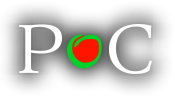|
|
| Invited Talk, Friday, 15:45 – 16:15 |
|
|
|
| Feeling for cell function
with light
Jochen Guck
University of Cambridge, Cavendish
Laboratory, Biological and Soft Systems (BSS), J.J. Thomson Avenue, Cambridge
CB3 0HE, United Kingdom |
|
|
| Contact:
| Website |
|
|
Light has been central in biological sciences to visually investigate cells
by microscopy. In recent years it has increasingly been used to also manipulate
biological samples by optically induced forces. Besides trapping, moving,
and rotating cells, optical traps can even be used to deform cells in a
controlled and nondestructive way. The deformation of cells with such an
optical stretcher can be used to gain insight into the internal structure
of cells, specifically the cytoskeleton and its connection to the nucleus.
In addition, the deformability of cells has turned out to be a very sensitive
inherent cell marker for any physiological or pathological change in cells
that is mirrored in the cytoskeleton or in nuclear structure. For example,
cancer cells are much more deformable than normal cells because they need
to be able to squeeze through small gaps in the tissue to form metastases.
An optical stretcher, integrated into an appropriate micro-fluidic system
for cell delivery, can thus be used to diagnose cancer, to detect malaria-infections,
or to identify and sort stem cells from heterogeneous populations with
relatively high-throughput. Recently, we have even shown that we can monitor
the epigenetic state of the nucleus by mechanical phenotyping, with relevance
for the pluripotency of embryonic stem cells. In this way, we now cannot
only look for changes in cell function, but feel for such
changes. |
|



